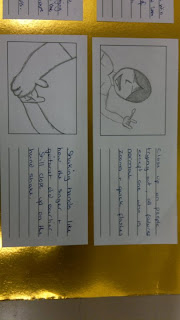Once the video had been finished, the next stage was to gather audience feedback. The reasons behind this were that we could gather constructive criticism and then make the changes to the video where need be. We targeted our target audience specifically, but the decided that it would be a good idea to target other people who weren't in the niche audience so that we could get a mixed opinion from a wider view. I also added the video o the Facebook page, where we gathered a few comments of feedback from viewers.
The feedback we received was mostly positive with a few negative comments on there, which was highly beneficial because it enabled us to realise the mistakes and make the changes needed. Me ad y team, as a group, could not see these changes and which is why we showed the to other watchers so they can spot the little mistakes which we don't see.
One member of the group made comments which stated that...
“I liked the cuts and transitions used because it was in time with the tempo and the song. I also liked how the narrative was shown quite clearly that he was over his head. I thought that the lip syncing was very good in most cases other than a few scenes.”
From this feedback i can tell that the lip syncing which was used was the main issue so we went back to the video editing machine and corrected the changes so that the video was more plausible. Another member of the audience stated that...
“There is a part near the end where the lead singer is on the bench on his own and it is irrelevant because it is there for one second and it looks out of place.”
Again, we looked at the error and made the changes necessary. The majority of the audience noted upon the narrative and complimented us for having such an emotional upsetting narrative, which in result was the message we wanted to put across, that it was a sad and upsetting storyline.












































